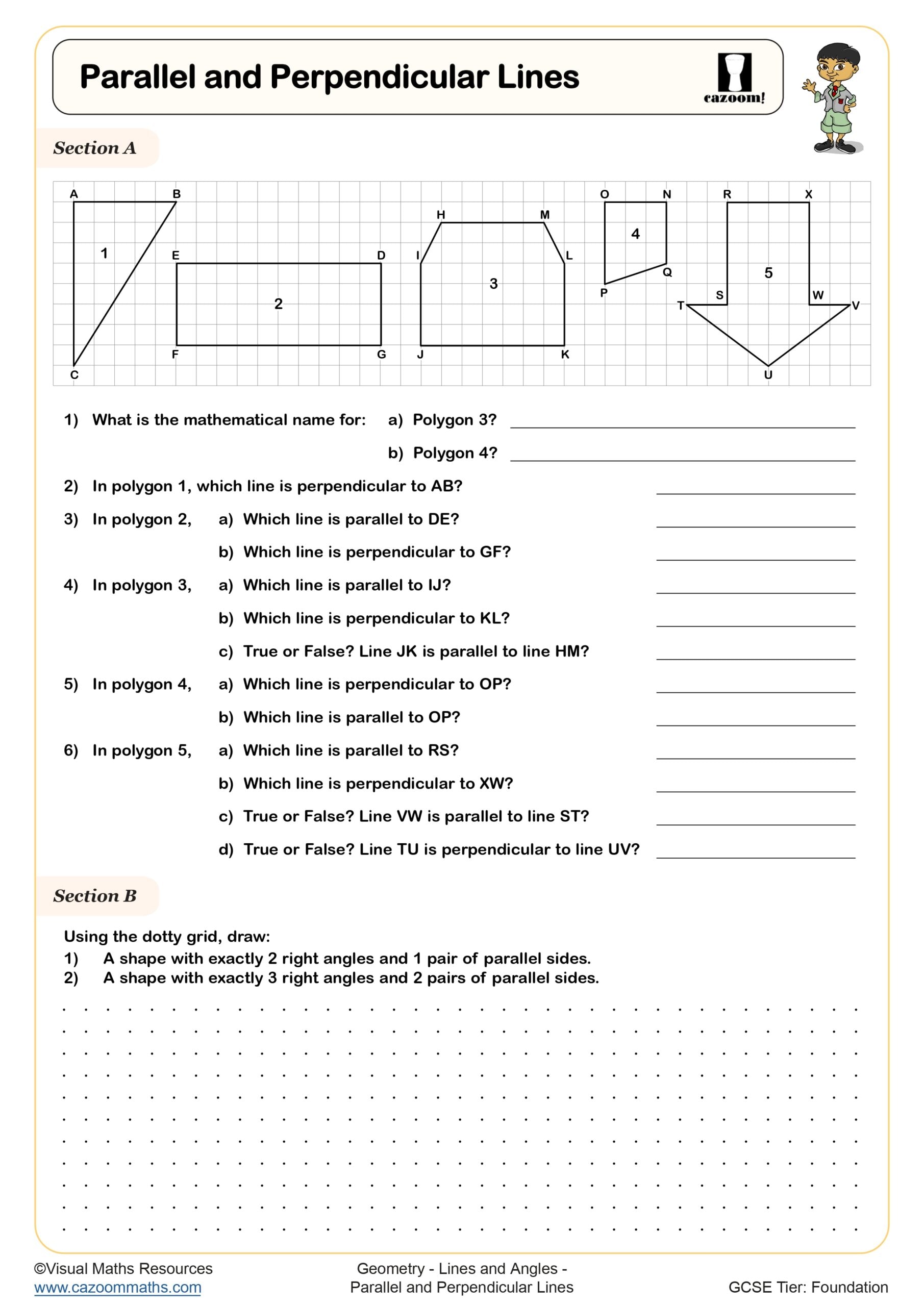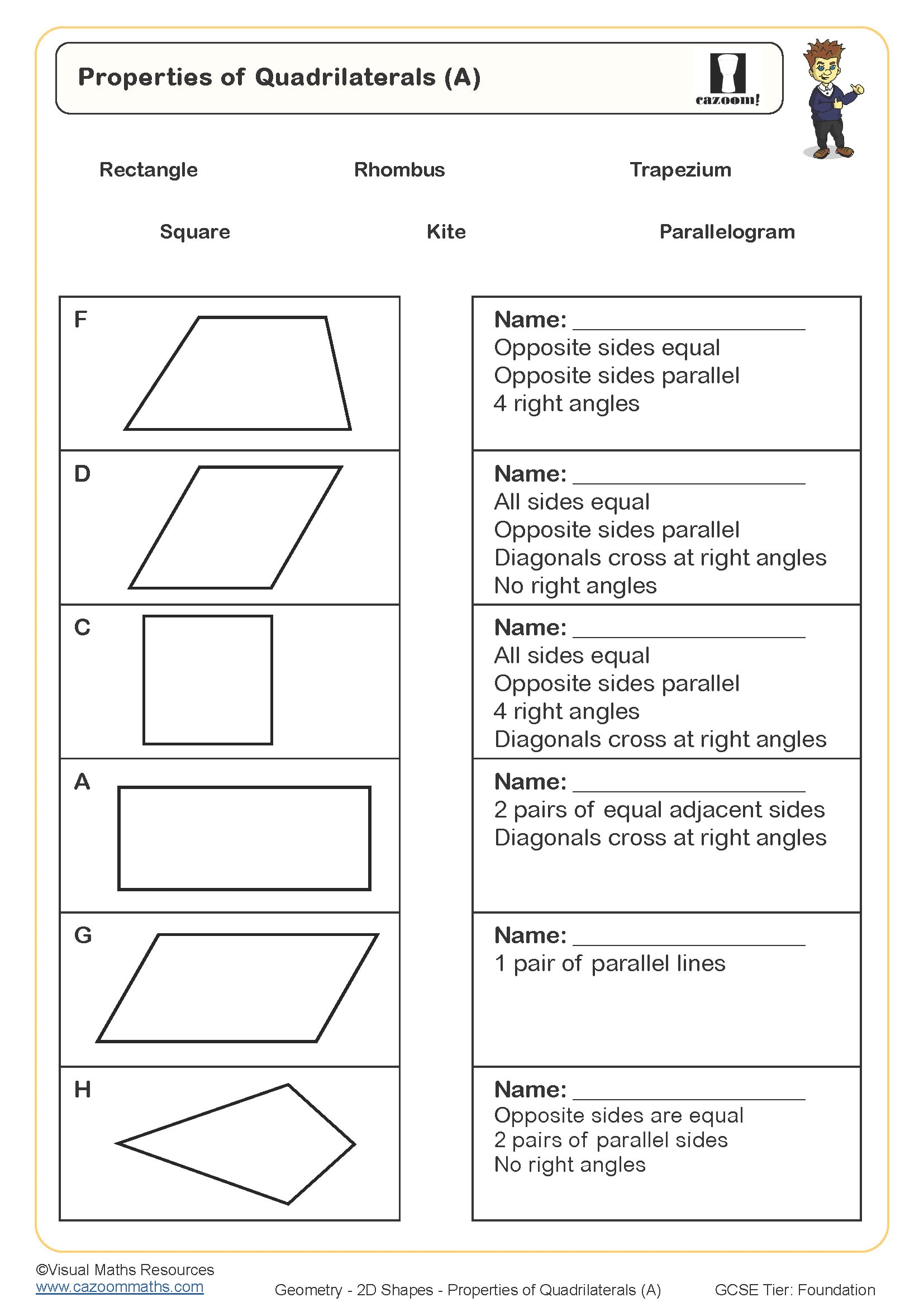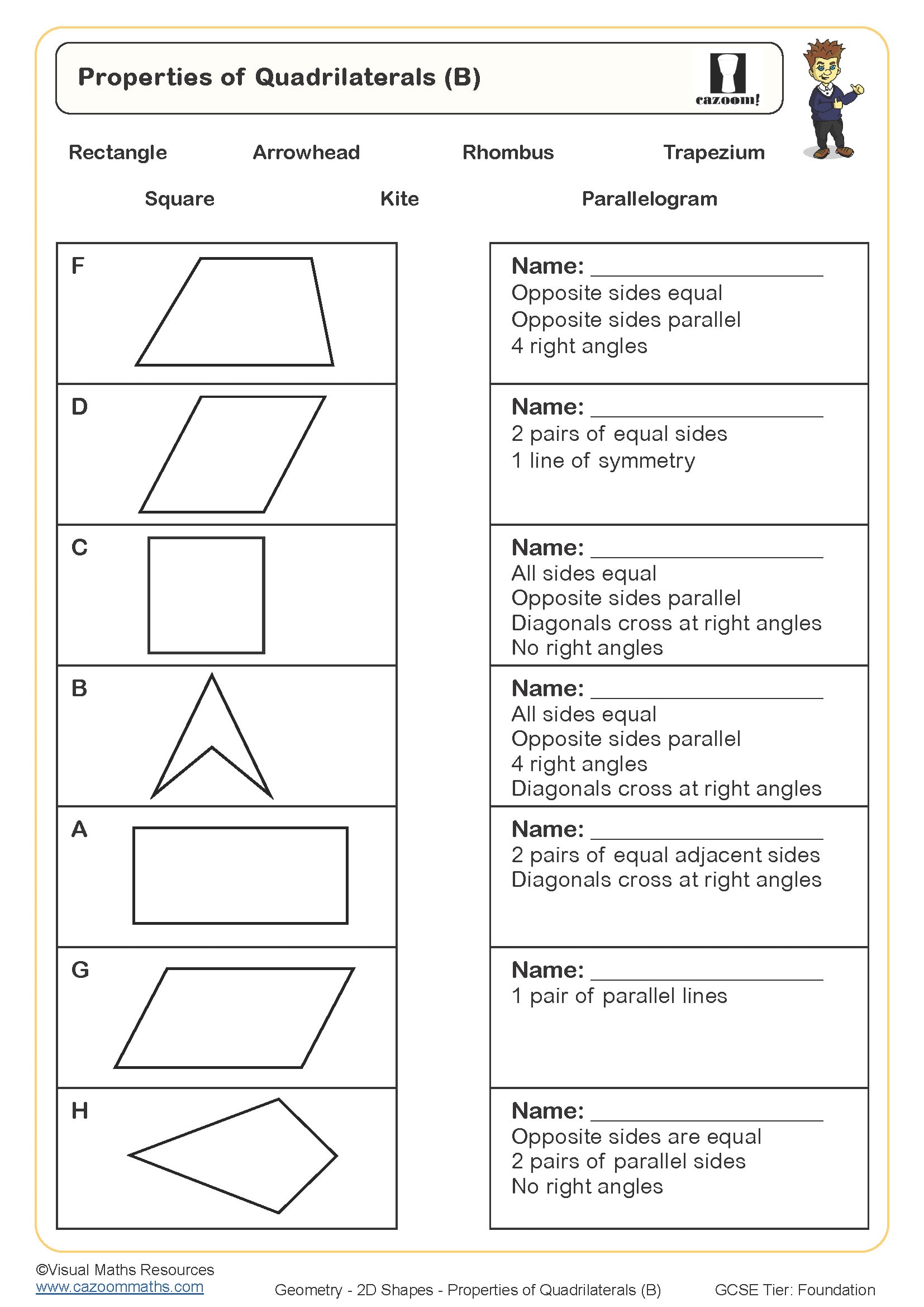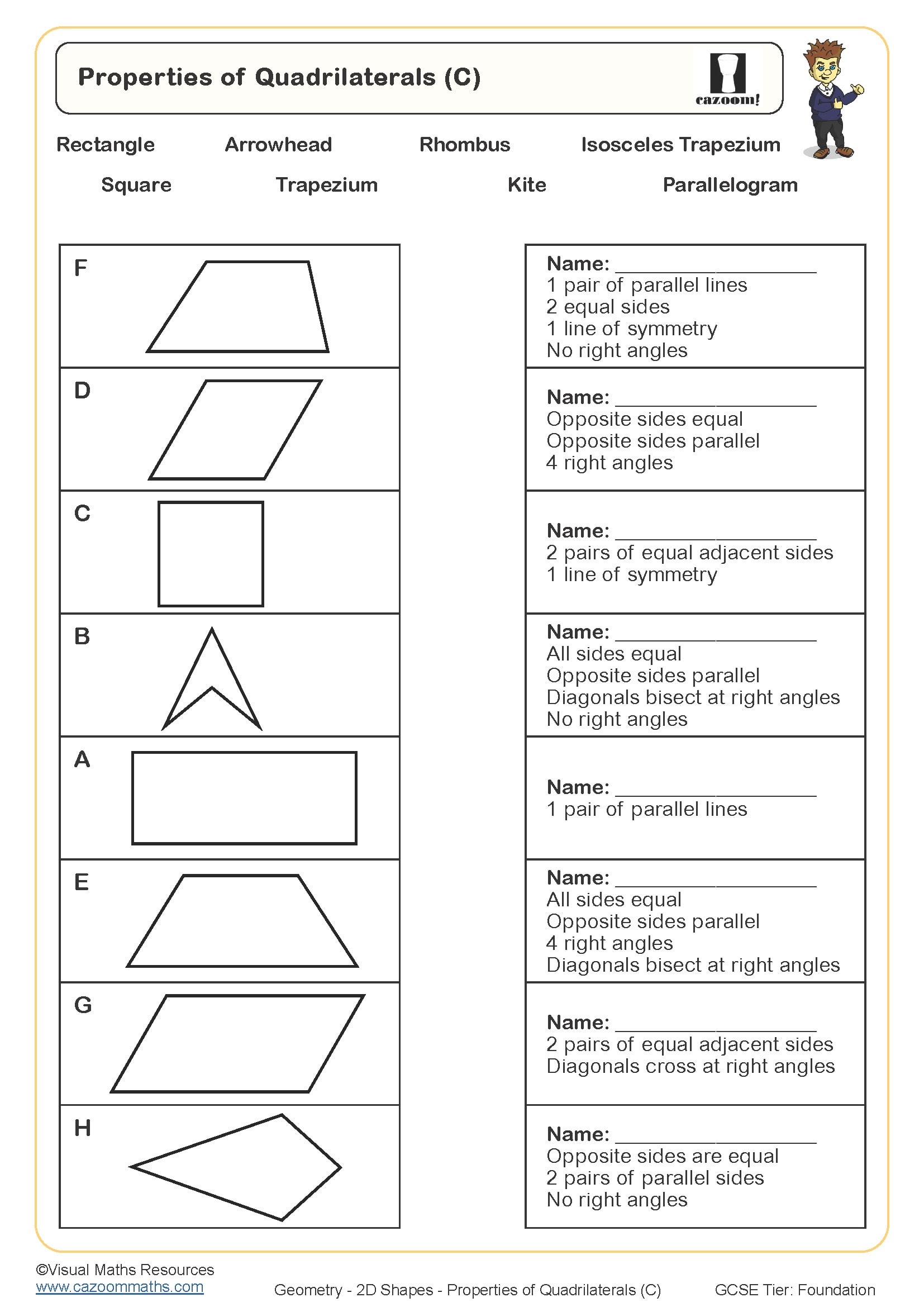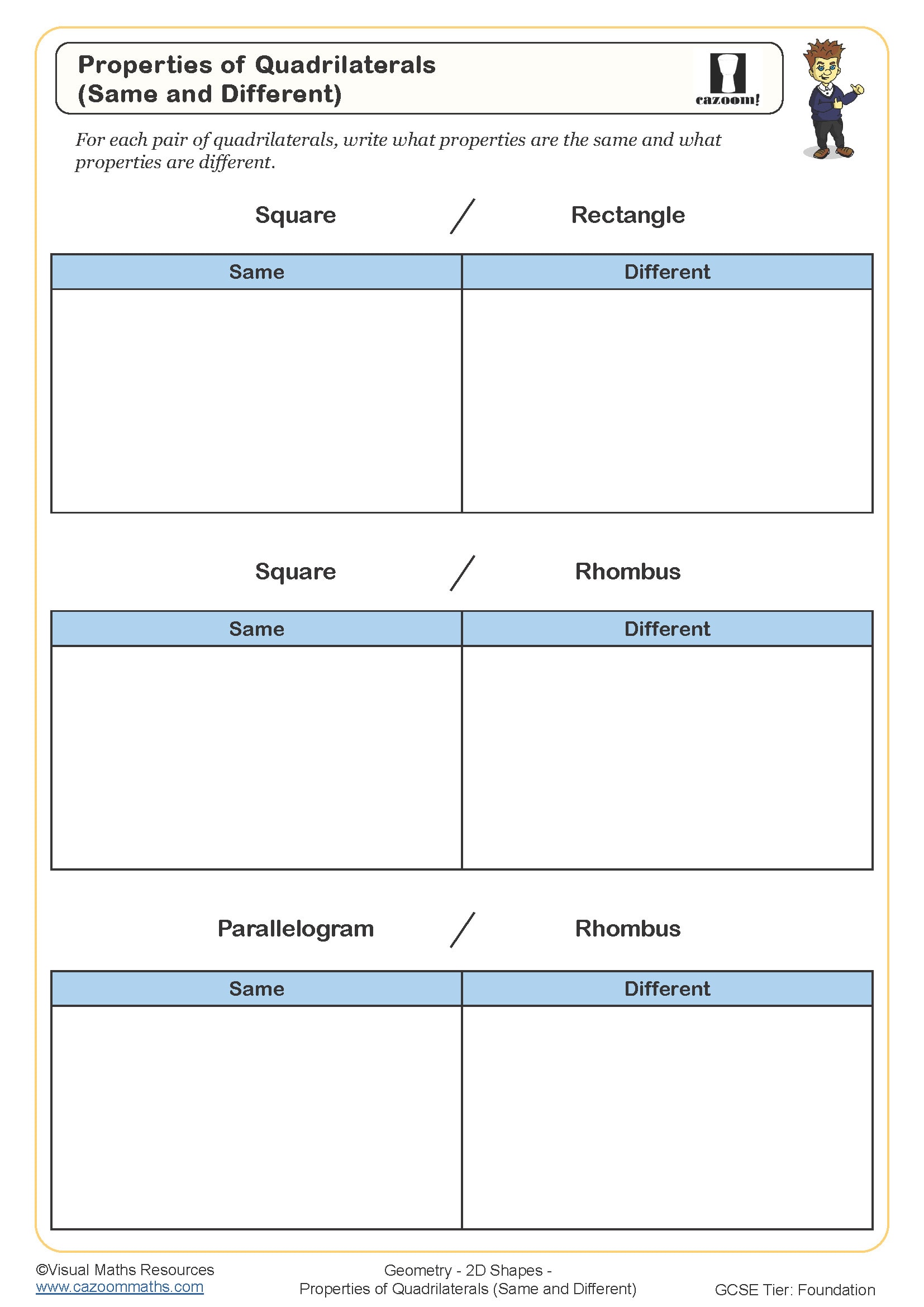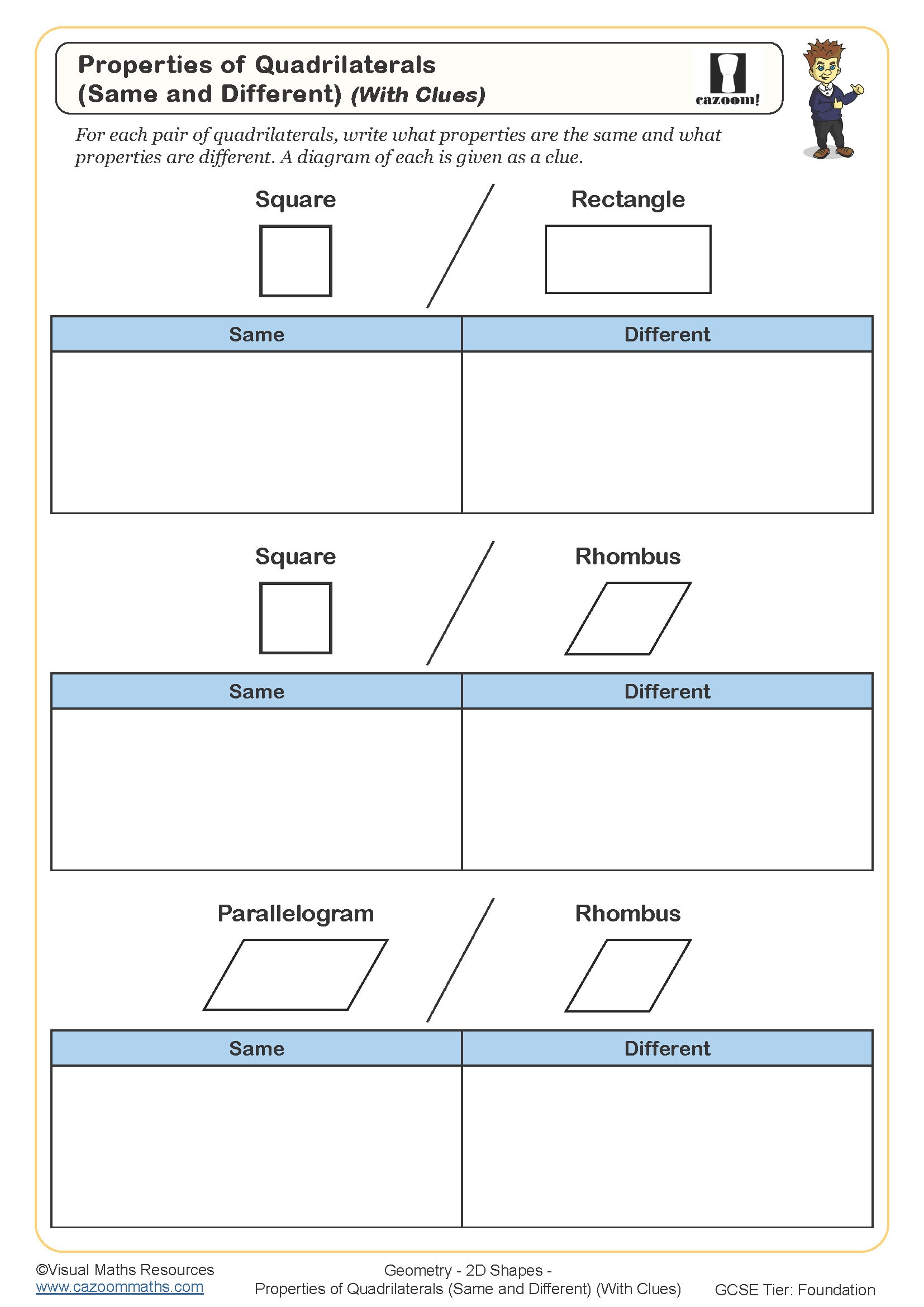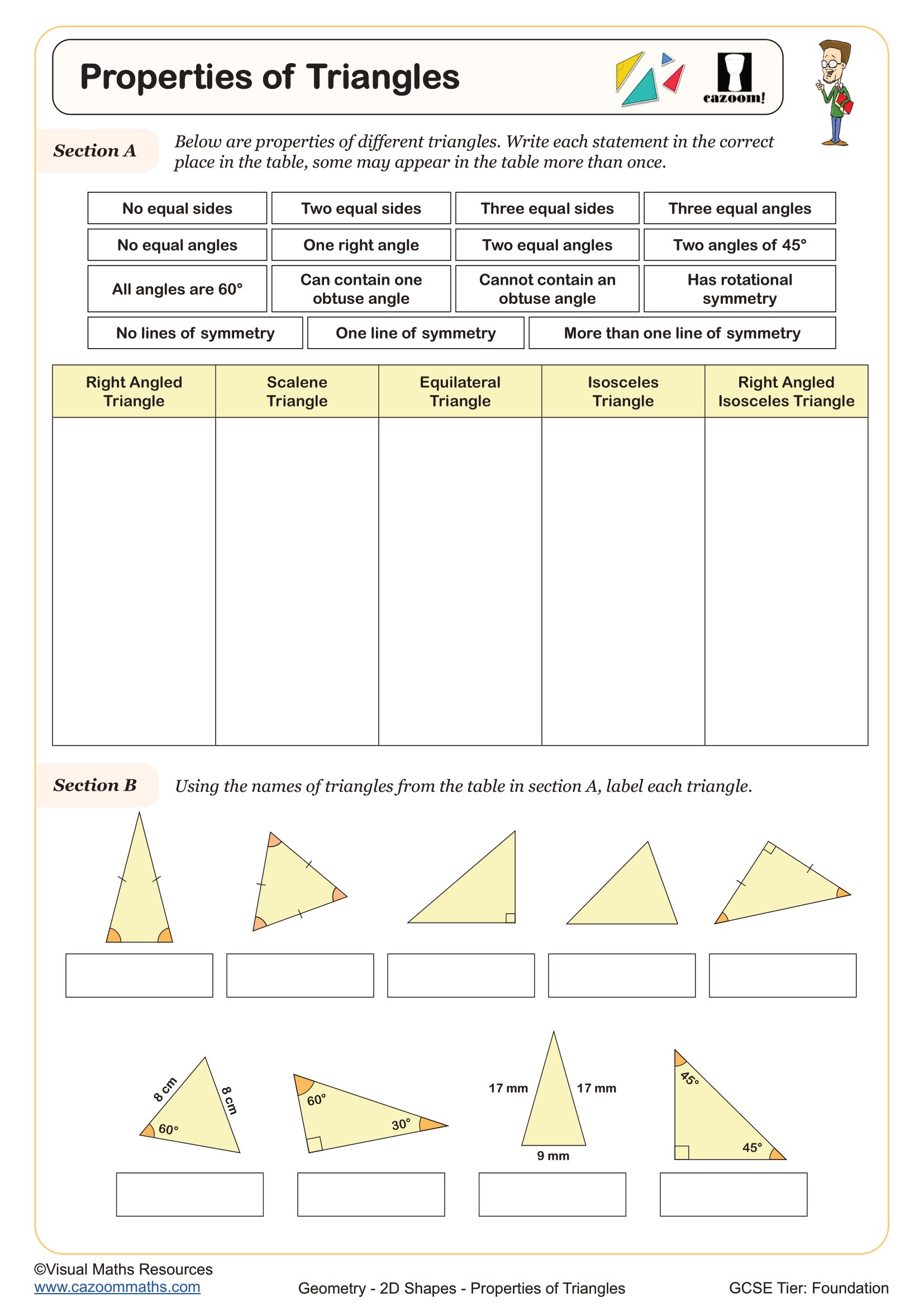Year 7 2D Shapes Worksheets
Year 7 Polygon Properties Worksheets PDF - Printable with Answers
Each of our maths worksheets is created in ready-to-use, printable PDF format and targets specific geometry skills related to key features of 2D shapes. The detailed solutions, which are included separately with each of our resources, clearly show every step. These maths resources make marking quick for maths facilitators and help your primary school students understand their mistakes easily and effectively.
What Do Year 7 Students Learn About 2D Shapes and Geometry?
What are 2D shapes?
2D shapes are flat shapes that only have length and width, like the pictures you draw on paper. Think of shapes like circles, triangles, and squares - they're completely flat with no thickness, so you can't pick them up or hold them in your hands.
With our activities, your students start with identifying basic polygon properties before moving on to classifying quadrilaterals and triangles by their specific characteristics. Here are the concepts included in our resources-
• Shape Classification and Properties
• Fundamental Line Concepts
• Comparative Shape Analysis
How 2D Shapes Practice Improves GCSE Maths Results for Year 7
Teaching 2D shapes to Year 7 students, we've noticed something interesting. Students who get regular practice with shape properties perform significantly better when they reach GCSE geometry topics. There's definitely a connection between understanding basic polygon classification and success with more advanced topics like circle theorems and trigonometry. Here's what consistent practice with our worksheets helps students achieve:
• Build confidence with mathematical vocabulary and precise shape descriptions
• Develop systematic approaches to calculating area and perimeter
• Master angle relationships within polygons and quadrilaterals
• Strengthen problem-solving skills through multi-step geometry problems
• Prepare effectively for Key Stage 3 assessments and future GCSE topics
Where Do Students Actually Use 2D Shape Knowledge in Real Life?
2D shape knowledge appears everywhere once you start looking for it. Our students regularly spot connections between classroom learning and practical applications. Architecture and engineering rely heavily on understanding polygon properties and area calculations. Even creative subjects like art and design benefit from solid geometric foundations. It's actually quite satisfying when students start making these connections themselves:
• Architecture - designing floor plans and calculating material requirements
• Graphic design - creating logos and layouts using geometric principles
• Engineering - understanding structural properties and load distributions
• Sports science - analysing playing field dimensions and movement patterns
• Interior design - calculating room areas and furniture arrangement
• Construction trades - measuring and cutting materials to specific shapes
